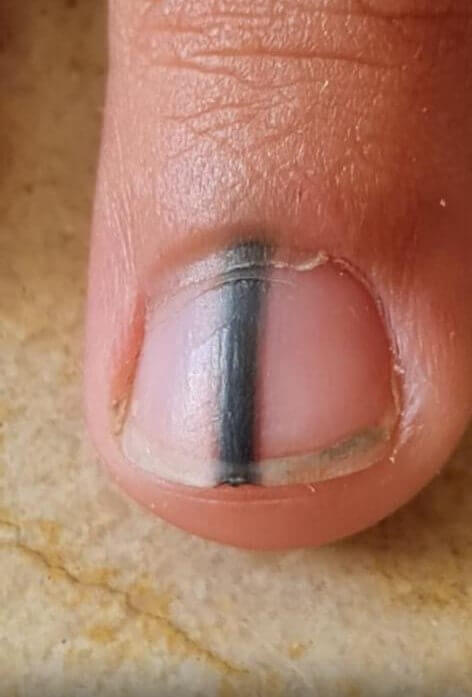
A black pigmentation of the nail – Melanonychia
Having a black (or brown) pigmentation of the nail is not a rare finding. It is usually due to the presence of melanin pigment in the nail itself or in the nail bed – the area where the nail is formed. It is called Melanonychia.
Professor Danny ben Amitai, a pediatric dermatology specialist, will teach us all about this important topic in this post.
How is this condition called and how common is it?
The full name of this condition is Melanonychia Striata. It is common in dark-skinned individuals and seen in almost every Afro-American by the time they are 50 years old. In Whites, it is less common and seen in only about 1% of the population.
Where is this black pigment typically found?
Melanonychia is typically found in the first 2 fingers (the thumb and the index finger) and the first toe.
What causes melanonychia?
The melanin pigment is produced by cells that produce melanin (melanocytes) that are found in the nail bed. Usually melanocytes are inactive, and do not produce melanin.
When these melanocytes are activated, they produce melanin and this causes the black pigmentation of the nail. This can also happen if an increased number of melanocytes are found in the nail bed.
Melanonychia due to the activation of melanocytes
Physiological causes – as mentioned above, this occurs in dark-skinned individuals or during pregnancy, due to the effect of pregnancy hormones on melanocytes.
Pathological causes – can occur following trauma to the nail, or due to conditions such as psoriasis, fungal infection, systemic diseases such as Cushing’s and Addison’s disease, hyperthyroidism or as a result of different medications.
Melanonychia due to an increased number of melanocytes
There are actually two reasons for this:
A. A pigmented birthmark in the nail bed
B. Melanoma
Wait a second, did you say melanoma?
Yes. It’s true that most of the time melanonychia is benign, but sometimes it can be the manifestation of a malignant tumor called melanoma.
Actually, about two thirds of melanoma cases in the nail, present with a black pigmentation in the nail.
This emphasizes the need for early differentiation between melanonychia cases that are a malignant tumor and the more common, benign condition.
Obviously, misdiagnosis and late detection of melanoma affect the chances of recovery. Keep in mind that the prevalence of melanoma in children is low, but still there, and it should be taken into consideration.
Therefore, the finding of melanonychia in a child requires a thorough examination.
So, what should I do if I notice a black pigmentation on one of my child’s nails?
Consult with a dermatologist as soon as possible.
The dermatologist will ask you for more details about the lesion and will carry out a thorough examination that will also include the use of a dermatoscope. Just as an example, a lesion that is triangular in shape, where a broader base in the inner edge of the nail is an indication of a lesion that has been growing. The involvement of the skin above the nail bed also indicates a concern for melanoma.
Therefore, when melanoma cannot be ruled out – a biopsy needs to be performed.
In summary, the take home message is to see a dermatologist when such lesions appear in order to detect dangerous lesions early on, both in children and adults.
Good luck!
For comments and questions, please register
